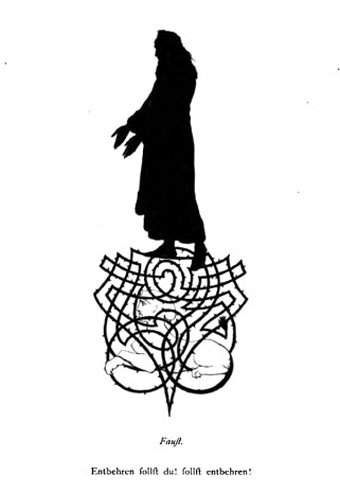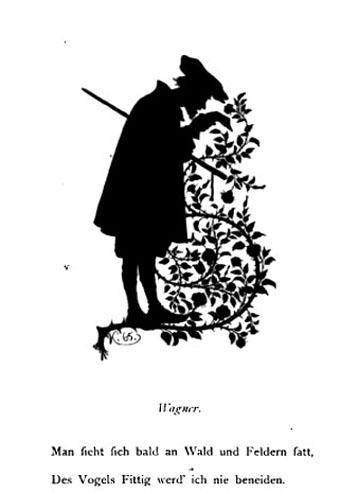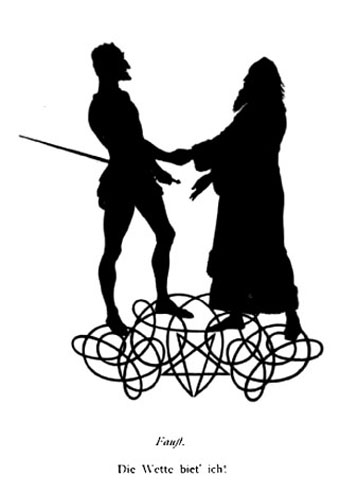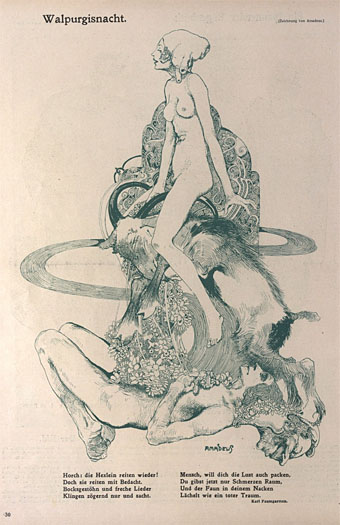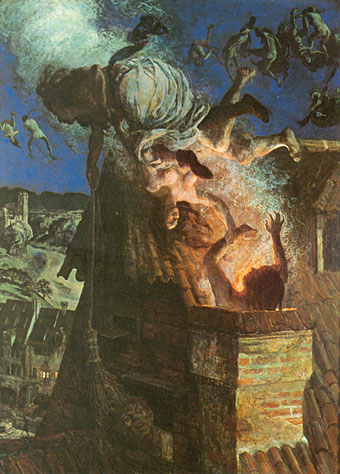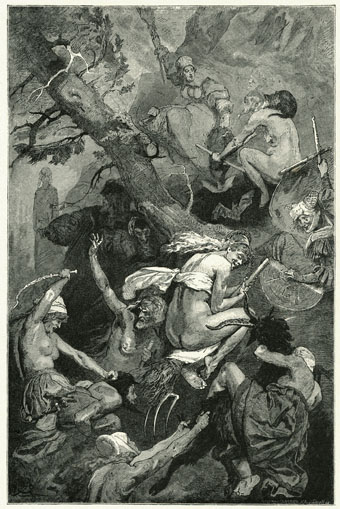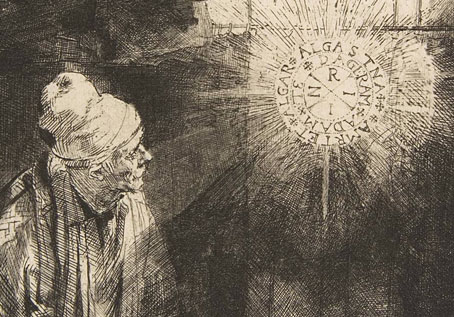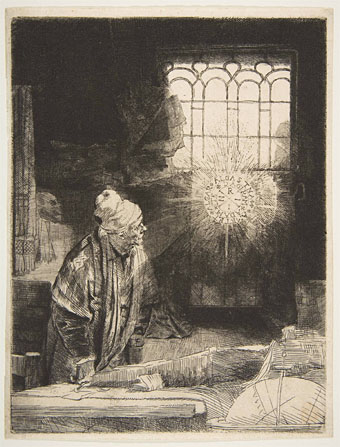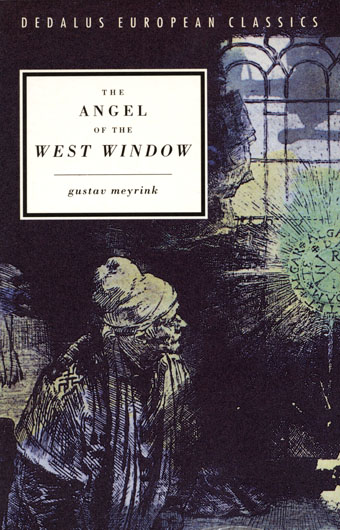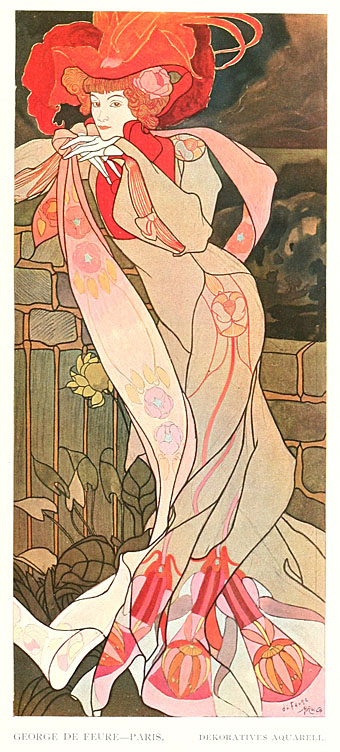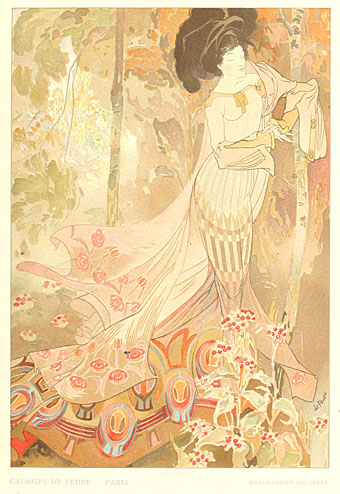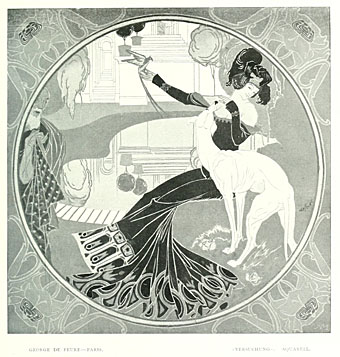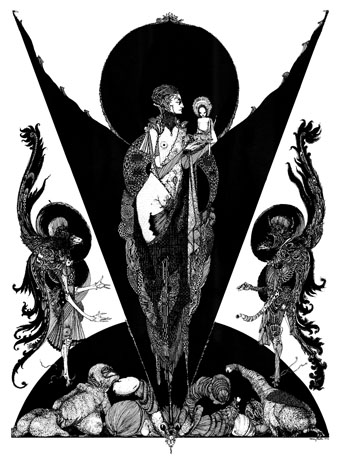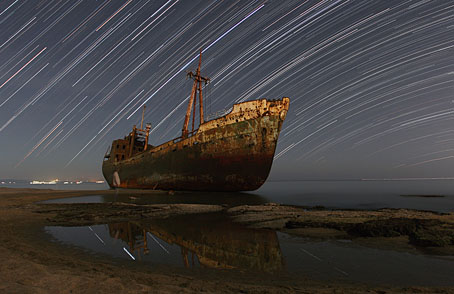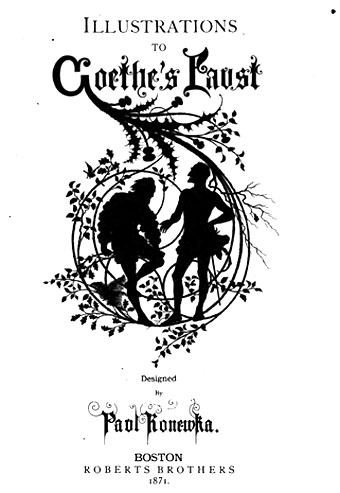
Discovered via the GoetheZeitPortal, these illustrations for Faust by German artist Paul Konewka (1841–1871) date from 1865, although the copies here are from a later edition. Konewka was a silhouette cutter so while these may look like ink illustrations they’re actually paper silhouettes displaying a formidable level of detail and complexity. Whatever the technique, the story itself is immediately recognisable from the characters even if none of the more dramatic scenes are represented. There aren’t many books you could treat in this fashion since the story has to be almost universally familiar; Shakespeare would be an obvious candidate—Konewka subsequently produced illustrations for A Midsummer Night’s Dream—fairy tales (like Arthur Rackham’s Sleeping Beauty), and also Lewis Carroll’s Alice books come to mind.
The copies shown here are from another shoddy Google scan at the Internet Archive but you do get to see all the pages. The Goethe site has better copies of the illustrations.
